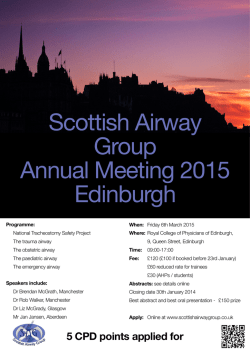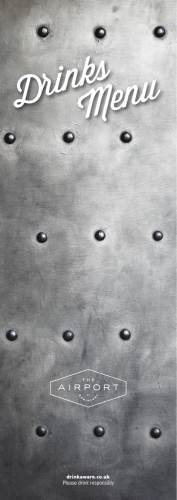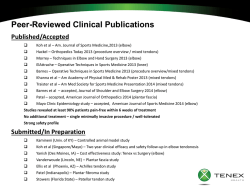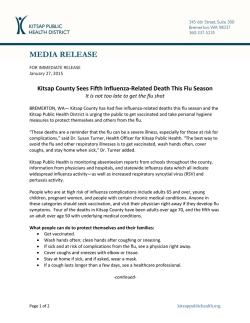
Download [ PDF ] - journal of evolution of medical and dental sciences
DOI: 10.14260/jemds/2015/209 ORIGINAL ARTICLE A STUDY OF AIRWAY COMPLICATIONS AMONG THE PATIENTS OF CLEFT LIP & CLEFT PALATE DURING INTRA OPERATIVE & POST OPERATIVE PERIOD AT GOVERNMENT GENERAL HOSPITAL, GUNTUR K. P. Polaiah1, K. N. Madhavi2, Thokala Sivaiah3 HOW TO CITE THIS ARTICLE: K. P. Polaiah, K. N. Madhavi, Thokala Sivaiah. “A Study of Airway Complications among the Patients of Cleft Lip & Cleft Palate during Intra Operative & Post-Operative Period at Government General Hospital, Guntur”. Journal of Evolution of Medical and Dental Sciences 2015; Vol. 4, Issue 09, January 29; Page: 1488-1492, DOI: 10.14260/jemds/2015/209 ABSTRACT: BACK GROUND: As Anesthesia for the children undergoing cleft lip and palate repairs surgeries are associated with a variety of airway related problems, we have to study in detail about this kind of morbidity in the study group. OBJECTIVES: 1.To identify the demographic profiles of the study group. 2. To know the various airway complications developed among the study subject during intra and post-operative periods. STUDY DESIGN: It is an observational study. STUDY AREA: Department of Anesthesiology, Govt. General Hospital, Guntur. STUDY SUBJECT: Patients (Children) of cleft lip and cleft palate admitted in Govt. General Hospital for surgery. SAMPLE SIZE: 100 cleft lip and cleft palate patients. STUDY PERIOD: March 2012 to August 2013 Results: Among total study sample the mean age of the study group was 24.42 months, range 3-180 months with a median age of 19.8 months was observed and among all the study group 49% had primary cleft lip (CL), 47% had cleft Palate (CP) and about 4% had combined cleft lip and palate (CLP). In this study the mean age and mean weight with reference to cleft lip 15.08 months and 8.2 kg, cleft palate 34.06 months and 13.2 kg, both cleft lip and palate 31.75 months and 13.5 kgs respectively was observed. Related to air way complications about 4.7% of the patients developed desaturation followed by 4% ET tube Disconnection, 2.2% difficult intubation, 1.5% ET Tube compression, 1.8% airway edema, 0.5% laryngospasm and 0.5% Brochaspasm was observed in this study. It is observed that maximum 25% of air way complications were observed among the patients of both cleft lip and cleft palate followed by 15% in only, cleft palate and 10% only in cleft lip. Regarding air way complications in association with age about 15.7% were observed among preschool children followed by 13.6% observed in infants (<1 Year). CONCLUSION: Cleft lip and palate deformities had relatively more airway complications the common complications are desaturation, endotracheal disconnection and difficult intubation. This can be reduced by anesthesia expertise, meticulous monitoring and postoperative care. KEYWORDS: Anesthesia, Cleft Deformities, Airway Compilations. INTRODUCTION: Cleft lip / cleft palate are the most common craniofacial anomalies in children, with an incidence of 1:800 live births, cleft palate alone occurs in the proportion of 1:2000 live births.[1] In Andhra Pradesh state, the distribution of the type of cleft showed 33% had cleft lip 64% had cleft lip and palate, 2% had cleft palate and 1% had rare craniofacial clefts.[2] Cleft lip & palate deformities are usually associated with abnormal dentition, hearing defect, recurrent ear, respiratory tract infections, pulmonary aspiration and poor nutrition problem etc. Recent concepts of timely repair in neonates are based on improvements in parent infant bonding, feeding, growth, speech development and psycho social development. Anesthesia for cleft surgery in infants and children carries a higher risk J of Evolution of Med and Dent Sci/ eISSN- 2278-4802, pISSN- 2278-4748/ Vol. 4/ Issue 09/Jan 29, 2015 Page 1488 DOI: 10.14260/jemds/2015/209 ORIGINAL ARTICLE with General Anesthesia and Airway Complications due to associated respiratory problems. Review of literature mentions higher incidence of perioperative respiratory complications when associated with the common cold symptoms in children for cleft repairs.[3,4] Morbidity during general anesthesia is associated with the difficult airway, Endotracheal (Et) tube compression / disconnection and postoperative obstruction[4] etc. MATERIAL AND METHODOLOGY: The study was conducted during the period of March 2012 to August 2013 in the Department of Anesthesiology, Govt. General Hospital, Guntur. All the patients Children - 3 months to 180 months suffering from cleft lip and cleft palate admitted in plastic surgery department, during the period March 2012 to June 2013 about 100 patients were taken as study subjects. After through pre-operative assessment, we took informed consent from all the parents of patients (Children), after detailed explanation about the complications, risks of anesthesia and surgery, the General Anesthesia was given by following the General Anesthesia protocol which usually we follow in the department. RESULTS: Among total study sample the mean age of the study group was 24.42 months, range 3-180 months with a median age of 19.8 months was observed and among all the study group 49% had primary cleft lip (CL), 47% had cleft Palate (CP) and about 4% had combined cleft lip and palate (CLP). SL. Type of Mean Age Mean No. Patients in months Weight in Kgs 1 Cleft Lip (CL) Only 15.08 8.2 2 Cleft Palate (CP) only 34.06 13.2 3 Both Cleft lip & Cleft Palate (CLP) 31.75 13.15 Table 1: Age & Weight wise distribution of study subjects In this study the mean age and mean weight with reference to cleft lip 15.08 months and 8.2 kg, cleft palate 34.06 months and 13.2 kg, and both cleft lip and palate 31.75 months and 13.5 kgs respectively was observed. SL. No. Type of Airway Complication Percentage of Complications 1 Desaturation 4.7 % 2 Laryngospasm 0.5 % 3 Difficult intubation 2.2 % 4 Endotracheal tube compression 1.5 % 5 Endo Tracheal tube disconnection 6 Airway edema 1.8 % 7. Brochospasm 0.5% 4% Table 2: List of Airway Complications Developed J of Evolution of Med and Dent Sci/ eISSN- 2278-4802, pISSN- 2278-4748/ Vol. 4/ Issue 09/Jan 29, 2015 Page 1489 DOI: 10.14260/jemds/2015/209 ORIGINAL ARTICLE Related to air way complications about 4.7% of the patients developed desaturation followed by 4% ET tube Disconnection, 2.2% difficult intubation, 1.5% ET Tube compression, 1.8% airway edema, 0.5% laryngospasm and 0.5% Brochaspasm was observed in this study. SL. No. Type of Patient Total No. of Cases No. of Cases Developed Complications Percentage 1 Cleft lip (CL) 49 5 10% 2 Cleft Palate (CP) 47 7 15% 3 Cleft lip & Palate (CLP) 4 1 25% Table 3: Number of complications developed in relation to type of patients It is observed that maximum 25% of air way complications were observed among the patients of both cleft lip and cleft palate followed by 15% in only, cleft palate and 10% only in cleft lip. Age Total No. of Cases No. of Complications Infant (<1 Year) 44 6 (13.6%) Pre School (1-5 Yrs) 51 8 (15.7%) School (5-15 Yrs) 5 0 Table 4: Number of Complications in Association with Age Regarding air way complications in association with age about 15.7% were observed among preschool children followed by 13.6% observed in infants (<1 Year). DISCUSSION: Cleft lip and cleft palate is a common congenital deformity happened to be seen in children as a result of heredity. Early and timely intervention (Repair) leads to almost normal growth and development in relation to abnormal dentition, hearing and speech defects and recurrent ear and respiratory tract infections in these children. In this study among the total study sample the mean age of study group was 24.42 months range of 3-180 months with a median age of 19.08 months was observed and with reference to cleft lip (CL) the mean age and mean weight observed was 15.08 months and 8.2 Kg, for cleft palate it is 34.06 months and 13.02 kg, for both cleft lip and palate it is 31.75 months and 13.15 kg were observed. Surgical repair of cleft lip is usually done at 1-3 months of age for cosmetic purpose and cleft palate at 6 months to 1 year of age to promote facial growth and speech.[5,6] So our study finding shows the importance of rise of awareness levels among the parents of these children and also in general public. By noticing the mean weight of patients it was understood that many of the study subjects were also suffering from malnutrition. J of Evolution of Med and Dent Sci/ eISSN- 2278-4802, pISSN- 2278-4748/ Vol. 4/ Issue 09/Jan 29, 2015 Page 1490 DOI: 10.14260/jemds/2015/209 ORIGINAL ARTICLE Related to air way complication about 4.7% of the patients developed desaturation followed by 4% ET tube disconnection, 2.2% difficulty intubation, 1.5% ET Tube compression, 1.8% airway edema, 0.5% laryngospasm and 0.5% Bronchospasm were observed in this study. In this regard most of our study, figures are correlating with the other studies in India. In our study difficulty intubation observed around 2.2% which is similar to the finding of Kalpana R Kulkarni’s[7] study which is 2.4%. Laryngospasm in our study 0.5% was noted which correlates with the studies of Olson GL, Hallen B 0.25%.[8] About 1.5% of Endtrocheal tube compression, 4% disconnection and accidental extubation was observed in our study which was also correlated with the studies of Kalpana R Kulkarni’s Study. In Mc Queen[9] et al study difficulty intubation, bronchospasm and airway obstruction accounted for majority 7.6% and 1.8% of Airway edema complication in our study correlates with the findings of Antony AK and Sloan GM studies.[10] Number of complications in relation to type of patients, maximum 25% of airway complications were observed among the patients of both cleft lip and cleft palate followed by 15% observed only in cleft palate and 10% in cleft lip only. This shows that incidence of airway complications are increasing with presence of combination of 2 or more cleft abnormalities. Lastly in our study we observed that regarding airway complications in association with age, complications are increasing with the advanced age of study group who came for surgery. This shows the importance of timely intervention of surgical repairs of cleft abnormalities in children. Conclusions and Recommendations: Finally we concluded that parents of study group were not bringing their children having the cleft abnormalities duly in time for surgical repairs, which increased not only the rise of airway complications during intra operative and post-operative periods but also delays the later growth and development of these children towards physical, mental and social aspects of their life. And also as the majority of study group are suffering from malnutrition (Not attain the required standard weights). Which also increases indirectly the rise of complications during intra and post-operative periods. So it is necessary to improve the nutritional status of children beginning from the womb to childhood period by means of conducting community awareness programmes by involving health sector, anganwadi workers, utilization of proper antenatal care services and motivation of the people to utilize national nutritional programmes implementing by the government. And especially for a anesthetist it is a difficult and challenging situation, due to its peculiar site and respiratory tract abnormalities. So during anesthesia management of cleft repair, skilled personal, pre-operative care, meticulous monitoring and post-operative care in an Intensive Care Unit setup are needed to minimize the complication. REFERENCES: 1. Cooper ME, Stone RA, Liu Y, Hu DN, Melnick M, Marazita ML Descriptive epidemiology of nonsyndromic cleft lip with or without cleft palate in Shanghai, China, from 1980 to 1989 Cleft Palate Craniofac J. 2000 May; 37(3): 274-80. J of Evolution of Med and Dent Sci/ eISSN- 2278-4802, pISSN- 2278-4748/ Vol. 4/ Issue 09/Jan 29, 2015 Page 1491 DOI: 10.14260/jemds/2015/209 ORIGINAL ARTICLE 2. “Incidence of Cleft lip and palate in the state of Andhra Pradesh, South India”; by Srinivas Gosla Reddy, Raj Gopal R Reddy et al – published in Indian Journal of Plastic Surgery 2010 Jul-Dec: 43 (2): 184-189. 3. Desalu I, Adeyemo W, Akintimoye M, Adepoju A. Airway and respiratory complications in children undergoing cleft lip and palate repair. Ghana Med J. 2010; 44:16–20. [PMC free article] [PubMed]. 4. Takemura H, Yasumoto K, Toi T, Hosoyamada A. Correlation of cleft type with incidence of perioperative respiratory complications in infants with cleft lip and palate. Paediatr Anaesth. 2002; 12: 585-8. [PubMed]. 5. Karron agarwal, cleft palate repair and variations, Indian J Plastic Surg. Oct 2009; 42(Suppl):S102-109. 6. Ziak P, Fedeles J Jr, Fekiacova D, Hulin I Jr, Fedeles J. Timing of primary lip repair in cleft patients according to surgical treatment protocol, Bratisl Lek Listy. 2010; 111 (3): 160-2. 7. Perioperative respiratory complications in cleft lip and palate repairs: An audit of 1000 cases of under ‘smile train project’ conducted by Kalpana R Kulkarni, Mohan R Patil et al - published in IJA; clinical investigation year 2013 /vol 57/ issue: 6/ Page 562-568. 8. Olsson GL, Hallen B. Laryngospasm during anaesthesia. A computer-aided incidence study in 136, 929 patients. Acta Anaesthesiol Scand 1984; 28: 567-75. 9. McQueen KA, Magee W, Crabtree T, Romano C, Burkle FM Jr. Application of outcome measures in international humanitarian aid: Comparing indices through retrospective analysis of corrective surgical care cases. Prehosp Disaster Med 2009; 24: 39-46. 10. Antony AK, Sloan GM. Airway obstruction following palatoplasty: Analysis of 247 consecutive operations. Cleft Palate Craniofac J 2002; 39:145-8. AUTHORS: 1. K. P. Polaiah 2. K. N. Madhavi 3. Thokala Sivaiah PARTICULARS OF CONTRIBUTORS: 1. Assistant Professor, Department of Anesthesiology, Guntur Medical College, Guntur. 2. Assistant Professor, Department of Obstetrics and Gynaecology, Guntur Medical College, Guntur. 3. Assistant Professor, Department of Community Medicine, Guntur Medical College, Guntur. NAME ADDRESS EMAIL ID OF THE CORRESPONDING AUTHOR: Dr. K. N. Polaiah, Flat No. 204, Dream Homes Apartment, 1st Lane, Rajendra Nagar, Guntur-522006. E-mail: [email protected] Date of Submission: 15/01/2015. Date of Peer Review: 16/01/2015. Date of Acceptance: 27/01/2015. Date of Publishing: 28/01/2015. J of Evolution of Med and Dent Sci/ eISSN- 2278-4802, pISSN- 2278-4748/ Vol. 4/ Issue 09/Jan 29, 2015 Page 1492
© Copyright 2025






